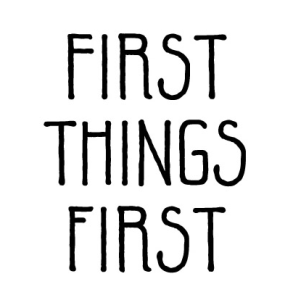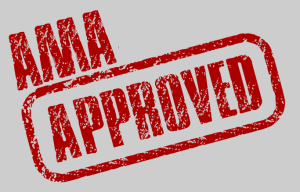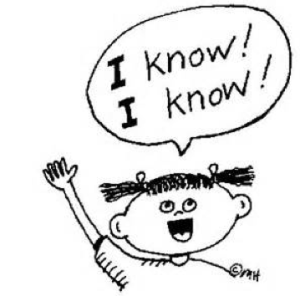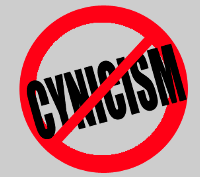Brain Science. What, Like it’s hard? Part 3a
The enemy of the truth is very often not the lie, but the myth – JFK
In his 1962 Yale commencement speech, President John F. Kennedy addressed one of the great issues facing our nation at that time. And now, 53 years later, his same remarks go right to the heart of one of the biggest challenges we face today – making the truth known about addiction and its treatment.
To do so we must confront the great dichotomy between the revered beliefs and stories about addiction that have been handed down through generations, and what is being revealed to us now, about the brain and the condition, with the aid of cutting edge technology.
As President Kennedy explained to the graduates in New Haven Connecticut,
“The great enemy of the truth is very often not the lie — deliberate, contrived and dishonest — but the myth — persistent, persuasive, and unrealistic. Too often we hold fast to the clichés of our forebears. We subject all facts to a prefabricated set of interpretations. We enjoy the comfort of opinion without the discomfort of thought.”
The myths President Kennedy was referencing had nothing to do with the ancient Greek and Roman legends. Rather, the myths he warned us to watch for are the widely held, though false beliefs that distract us from the truth.
Some pretty big myths continue to shape many of our beliefs today. They involve ideas about economic welfare, political theory, corporate responsibility, issues of equality and inequality, of rights and opportunities. Each one has its own champions as well as its challengers. In many cases, distinctions between the sides are nuanced, and arguments represent opinions, feelings, beliefs and desires. Typically, when facts are introduced, they have been interpreted to fit a set narrative, and are presented within that context.
But in the case of addiction, the divide between the old beliefs and new knowledge is not nuanced. And the sharp contrast might mean the difference between continued slavery and liberation; between accepting powerlessness and gaining strength, and even between life and death.
In the 1930’s Bill Wilson (Bill W.) and Dr. Robert Smith (Dr. Bob) used what tools were available to break free of the subhuman treatment of alcoholics and addicts and bring to those who were suffering a means to achieve rational acceptance of their chronic disease, a new way to live in faith, substance-free, one day at a time.
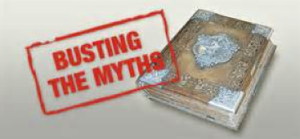 Now, 80 years later, it’s time that we break free of the outdated beliefs of the ‘30’s, of the restraints imposed by those ideas on people struggling with addiction, and reveal the truth being learned about addiction and the prospect of full recovery.
Now, 80 years later, it’s time that we break free of the outdated beliefs of the ‘30’s, of the restraints imposed by those ideas on people struggling with addiction, and reveal the truth being learned about addiction and the prospect of full recovery.
In this post we’ll talk about the making of the myth that shapes the foundation of the $400 Billion addiction industry and the million-plus people it employs. It is the widely held, but false belief that addiction is a chronic brain disease stemming from an impaired midbrain reward system.
 Please know that I am not, in any way, shape or form, suggesting that addiction is anything other than a debilitating and life-threatening condition. Addiction, in all of its forms, is a horrible and frightening condition that kills people. It is serious. It is not something to merely accept and surrender to. We must take it head-on, use all the tools, technology and techniques now available to defeat it, restore hope and save lives.
Please know that I am not, in any way, shape or form, suggesting that addiction is anything other than a debilitating and life-threatening condition. Addiction, in all of its forms, is a horrible and frightening condition that kills people. It is serious. It is not something to merely accept and surrender to. We must take it head-on, use all the tools, technology and techniques now available to defeat it, restore hope and save lives.
How Myths Are Made
Everybody Knows Addiction Is A Chronic Brain Disease. 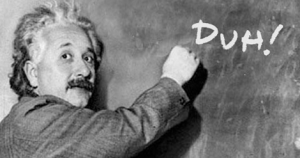
It’s one of the fastest ways to shut down debate. Make the guy challenging you look and feel stupid by dismissing his questions, and declaring for all to hear, that everybody already knows the answers. End of discussion.
It was one of those big “Duh!” situations that preempted meaningful debate when defining addiction as a chronic brain disease, and the 12-step method as the accepted means of treatment, without objective evidence to support either.
What started in the early 1900’s as a reasonable way to explain the unexplainable behavior of alcoholics, was embraced by AA founders Bill W. and Dr. Bob who in 1938, made the disease theory of addiction the centerpiece of their breakthrough 12-step method and the treatment program it inspired.
When the AA Big Book was published in 1939, their theory and 12-step method attracted new followers, and as the story gained widespread acceptance – aided by such endorsement as the New York Times reviewer who on June 25, 1929 wrote “The Big Book is “More soundly based psychologically than any other treatment I have ever come upon” – the premise took root and became doctrine.
It was in the 1950’s, that early brain science identified the midbrain reward center as addiction’s point of origin, giving the American Medical Association reason to embrace the premise and adopt alcoholism, or addiction, as a medical disease to be treated.
With that medical endorsement, when the National Institute on Drug Abuse (NIDA) was established in 1974, the widely accepted, though still unproved, premise was enshrined as the agency’s underlying belief. And since that time, the position has served as the growing industry’s cornerstone and going-in assumption from which addiction research has been developed.
By the 1980’s and 1990’s, when new technology in the form of Magnetic Resonance Imaging (MRI) and Functional MRI first allowed scientists to watch the brain at work and see how it actually functioned, everybody already knew that addiction was a chronic brain disease tracing back to a midbrain reward system dysregulation or impairment. Everybody already knew that addiction could not be overcome but must be managed daily. Everybody already knew that recovery was rare and that relapse could be expected. And everybody already knew that when relapse happened, more treatment was needed.
The Search Party
Within this context, it’s not all that hard to understand why the industry jumped at the chance to harness the new imaging technology to learn how the presumed brain impairment ultimately leads to chronic addiction. And we can (almost) understand their not wanting to take the time to step back and re-examine, or attempt to verify, their underlying beliefs, let alone go to the trouble of exploring alternative ideas like – oh I don’t know- maybe that addiction can be overcome after all.
This is the point where a cynic might say that the industry set out to justify their established position and knowingly overlooked contradicting data in their research. But we’re not going to go there.
 I’m accepting that the industry was certain that its stance on addiction was right; that they were confident in their premise when they launched a scientific search party, armed with cutting edge technology and a researchers numbering in the thousands, to explore the genetic origins of the presumed brain system impairment, to trace the path of addiction development from early use to full-blown addiction, and to establish a basis for believing full-blown addiction’s a chronic disease.
I’m accepting that the industry was certain that its stance on addiction was right; that they were confident in their premise when they launched a scientific search party, armed with cutting edge technology and a researchers numbering in the thousands, to explore the genetic origins of the presumed brain system impairment, to trace the path of addiction development from early use to full-blown addiction, and to establish a basis for believing full-blown addiction’s a chronic disease.
Given the industry’s goal of improving ways to manage chronic addiction symptoms, and recognizing that considerable research funding was coming from pharmaceutical organizations, it is understandable that much of the agency’s research focused on studying the effects of different pharmaceuticals on the addicted person’s mood, emotions, and behavior.
Note: Because technology is not yet capable of measuring neurotransmitter volumes, scientists could not evaluate the specific effect of different drug compounds on the brain’s reward center performance and neurotransmitter levels. That relegated much of the research to a process of trial and error that depended on the test subjects’ self-reported responses to various medicinal drugs to gauge their effect.
What is more difficult to understand is how or why the industry failed to acknowledge the published findings not only from their own studies, but from cutting edge research in related fields of study, that blow great big holes in the deeply entrenched addiction premise.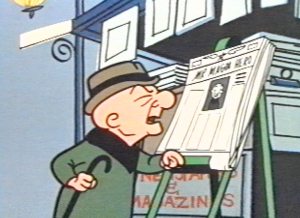
I’m guessing that by the time these studies came about and the contradictions began popping up, addiction researchers were so heads-down in their hunt for clues leading to answers about the assumed reward center impairment and the closing bonds of chronic addiction, that they simply didn’t see what they weren’t expecting to find.
I’m assuming that by this time, the growing field of addiction science was so thoroughly indoctrinated in its own premise, that it either had forgotten, didn’t consider, or simply wasn’t concerned that there was zero objective evidence to confirm its core position
This is the only explanation I can come up with to explain why the conflicting data didn’t seem to register so much as a footnote mention in the ongoing industry reporting.
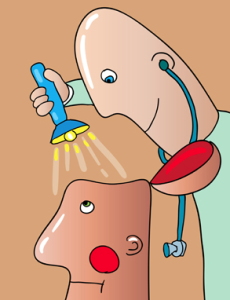
Fortunately, scientists are curious folks. And aided by exciting new imaging technology, researchers both within and outside the addiction industry have been busy exploring new realms of the brain and reporting their findings. In studying Parkinson’s disease, Stroke, Alzheimer’s, Traumatic Brain Injury and other brain conditions, researchers have gained a wealth of information with specific application to addiction, especially in areas related to decision-making, learning, our individuality and our brain’s ageless ability to grow, learn, change and heal (as addressed earlier.)
While we’ve only scratched the surface in understanding the brain and how it works, when we are willing to look at the full spectrum of what’s been found, it changes our understanding of addiction and how it should be treated.
That said, within the addiction industry, including the principle treatment resources, it remains business as usual.
Current Addiction Treatment – In a Nutshell
Over 90% of all addiction treatment today is based on the industry position that addiction is a chronic brain disease, and teaches symptom management through the Alcoholic’s Anonymous 12-step method. The stated purpose of treatment is to help people struggling with addiction learn to live without alcohol or other substances; for them “to experience the advantages of living without substances.” 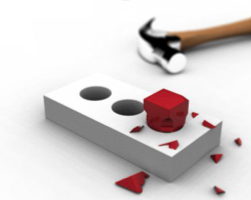
The method began 80 years ago using the best information available and with good intentions to help adult men and women of faith adopt a new lifestyle. Since then, the method’s language has been adjusted to political correctness, bits of science have been molded to conform to its premise, and it is being used as a framework to treat people of all ages, beliefs, and dependency issues.
Because the treatment method’s principle goal of recovery is only loosely defined, any attempt at evaluating treatment effectiveness is tenuous at best. And since the extended goal of remaining “in-recovery” is even more vaguely and variously defined, it’s anyone’s guess what’s being reported when the industry and individual treatment facilities report their long term success or effectiveness.
The absence of objective standards and measurements in diagnosing and treating addiction has left the door wide open to unsubstantiated claims implying treatment outcomes never achieved, feeding the myth that sustains the premise and its methods.
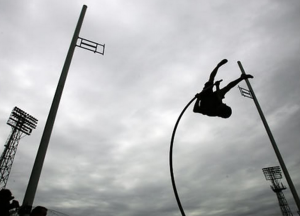 To understand this better, think of a pole-vaulter hurtling him or herself into the air, without a bar in place to determine what was achieved.
To understand this better, think of a pole-vaulter hurtling him or herself into the air, without a bar in place to determine what was achieved.
Can you imagine how many new world records might be claimed?
Does Treatment Work?
It really took my sorting through hundreds of treatment promotional pieces and interviewing dozens of practitioners, to understand that treatment effectiveness and recovery are variously defined and can include such benchmarks ass successfully completing a treatment program, completing certain phases of treatment, remaining substance-free for “X” number of days, regularly attending AA meetings, or other similar gauges.
Again, it’s important to note that nearly all program evaluation depends on the addicted (recovering) person’s self-reported emotions and behavior. And as you can imagine, there are all sorts of outside influences that might sway a person’s responses.
It’s within this context, that treatment is recognized as being effective among 10% – 15% of the people 25 years and younger (85% – 90% failure); is said to be effective among 40% – 50% of adults 25 years and older (50% – 60% failure.) Individual facility marketing claims reporting far greater success rates warrant close examination of how it is defining “success” or “effectiveness.”
I leave it to you to draw your own conclusions on treatment success. But know this: The war on drugs has not been lost because we failed in our efforts to win. It is being lost because our goal has never been to win. Since its start, the going-in proposition has been that addiction is a chronic and relapsing disease/disorder that cannot be defeated, but must be managed daily for life. The principle evidence backing the premise is that no treatment leads to full recovery. Yet as you know, treatment does not attempt to achieve true recovery.
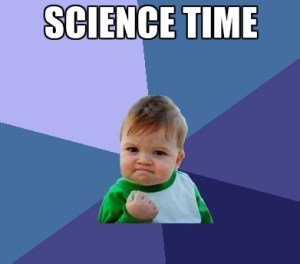
There is so much to discuss about today’s treatment system, including its goals and objectives, diagnostic criterion, outcome reporting, differentiation among providers and more. But for now the focus will be on the science and the game-changing implications for addiction treatment.
The industry premise hinges on two beliefs:
- A mesolimbic neurotransmitter dopamine dysregulation (midbrain reward system impairment) leads people to substance abuse and addiction. It is this belief, that a biological system dysfunction is at the root of addiction, that qualifies it to be named a disease.
- When people advance to full-blown addiction, their substances bond with their prefrontal cortex (executive brain region) forming a meaningful and lasting connection. At this point the addiction is classified as being chronic, meaning it cannot be overcome.

If this premise is disproved, the foundation of the addiction industry crumbles, opening the door to new ways of understanding addiction and approaching its treatment. But here’s the dilemma.
Neither of the above two principles has ever been proved objectively, because neither the presumed impairment nor the final addiction bond can be detected. And since they cannot be found (detected), they cannot be examined to understand and prove or disprove their role in addiction. Unfortunately, this is one of those cases in which the absence of proof is not proof of absence.
Whether they remain undetected because technology is insufficient to the task, or because the targets do not exist as believed, is irrelevant at this point. For generations, people have been indoctrinated in these principles and now, because everybody already knows these to be the accepted truths about addiction, the burden is on us to disprove it.
And I believe the only evidence that will be accepted, especially evidence that addiction is neither a disease nor chronic, will be in our demonstrating, through a specific and repeatable method, that addiction can be fully overcome.
Yeah, I know this is frustrating. Welcome to my world.
This is a good place to break and I’ll pick up here with part 3-b on Brain Science in a few days. But I’ll leave you on an encouraging note.
As explained in prior posts, existing cutting edge 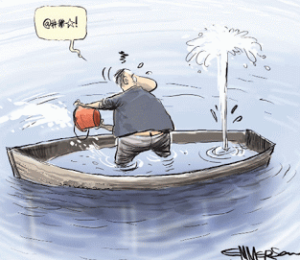 research has provided the ammunition needed to blow holes in the established premise.
research has provided the ammunition needed to blow holes in the established premise.
And with the way cleared, we can begin the hard work of leading people out of addiction. I’ll summarize the findings, and provide source data, should you wish to explore further, next week.
But here’s a preview of coming attractions
• Studies within the industry and in related fields have revealed that the brain reward system thought to be impaired likely is performing as it was designed for good purpose; that it does not lead to substance use but rather to a person’s driven nature.
• New insight into brain development and the progressive development of addiction raises a question about people with still-developing executive brain regions; whether their immature prefrontal cortex is sufficiently developed to form the closing addiction bond. If it is not, are they even capable of advancing to full-blown addiction? And if they are not, might we still be able to prevent full-blown addiction among people less than 25 years?
• Studies across brain science demonstrate that our brain continues to grow, change, learn, even self-repair, and establish new patterns well into our older years. The implication is that the brain need not become “hardwired” or locked into any one set of beliefs, values, desires and behavior.
• Studies from a range of disciplines reveal the brain areas and functions involved in forming and expressing our faith, values, beliefs, judgments, decisions and learning. They provide insight into how we build our character, and how that character in turn influences our judgments, decision making and choices of behavior. And the studies indicate how we can redevelop our character, or individuality, changing critical influences on our judgments, decisions and behavior.
It’s all pretty cool stuff.
Thanks for stopping by The Stand. Hope you come back next week.

